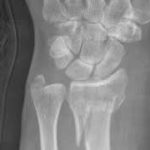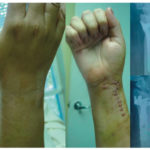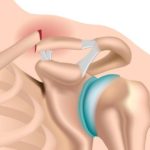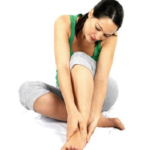The wrist is made up of eight small bones and the two forearm bones, the radius and ulna. The bones come together to form multiple large and small joints. At each joint, the ends of the bones are lined with a very smooth covering (cartilage). The bones are held together by ligaments. The shape and… Read More »
Stress fractures
The shoulder is a joint suspended by many muscles surrounding the upper extremity. The shoulder bones include the clavicle (collarbone), the scapula (shoulder blade), and the humerus (upper arm bone). The only connection of the shoulder girdle to the remainder of the skeleton is the clavicle. The scapula is an important part of the shoulder… Read More »
Fractures often take place in the hand. A fracture may cause pain, stiffness, and loss of movement. Some fractures will cause an obvious deformity, such as a crooked finger, but many fractures do not. Because of the close relationship of bones to ligaments and tendons, the hand may be stiff and weak after the fracture… Read More »
Distal Humerus Fractures of the Elbow How do elbow fractures happen? Elbow fractures may result from falling onto an outstretched arm, a direct impact to the elbow, or a twisting injury. Sprains, strains, or dislocations may occur at the same time as a fracture. What are the signs and symptoms? Pain, swelling, bruising, and stiffness… Read More »
A broken collarbone is also known as a clavicle fracture. This is a very common fracture that occurs in people of all ages. The most common fracture about the shoulder is of the clavicle, frequently the result of a fall onto the shoulder. These fractures can be quite painful and cause difficulty in moving the… Read More »
A stress fracture is an overuse injury. When muscles are overtired, they are no longer able to lessen the shock of repeated impacts. When this happens, the muscles transfer the stress to the bones. This can create small cracks or fractures. The most common sites of stress fractures are the second and third metatarsals of… Read More »
Pilon fractures affect the bottom of the shinbone (tibia) at the ankle joint. In most cases, both bones in the lower leg, the tibia and fibula, are broken near the ankle. Pilon is a French word for pestle, an instrument used for crushing or pounding. In many pilon fractures, the bones of the ankle joint are… Read More »
The bones of children and adults share many of the same risks for injury. However, a child’s bones are also subject to a unique injury called a growth plate fracture. Growth plates are areas of developing cartilage tissue near the ends of long bones. The growth plate regulates and helps determine the length and shape… Read More »













